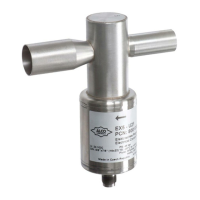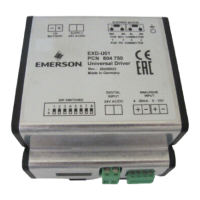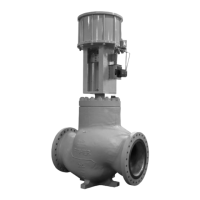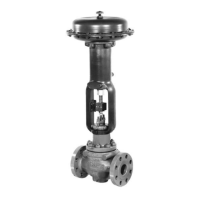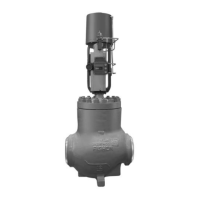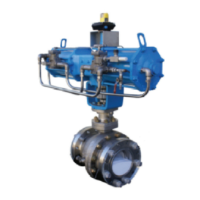Safety
Information
Introduction Installation
PowerTools
Pro Software
Communications
How
Motion
Works
How I/O
Works
Configuring
an
Application
Programming
Starting and
Stopping
Motion
Starting and
Stopping
Programs
Parameter
Descriptions
Drive
Parameters
Used by
EZMotion
Diagnostics Glossary Index
EZMotion User/Programming Guide 213
Revision A8 www.controltechniques.com
Queue Source
Queue.#.Source
The Queue Source determines which parameter the sum of the Queue Data and Queue Offset are compared to in order to
activate the Queue Exit function. If set to Position Feedback, the sum of the data and offset are compared to the Position
Feedback parameter. If set to Master Position, then the sum is compared to the Master Feedback Position parameter, and if
set to Command Position, then the sum is compared to the Motor Commanded Position.
Rotary Rollover Enable
RotaryRolloverEnable
This parameter is used in applications with a predefined repeat length. One example would be a rotary table with a rotary
rollover position of 360 degrees. The position will rollover to zero when the axis position gets to 360 degrees. (358, 359,
359.999, 0.0000, 1, 2, and so on.) The rollover point is defined to be exactly the same position as 0.
Selector Input Destinations
Selector.SelectLinesUsed
The selector is a binary to decimal decoder. This parameter selects the number of destinations (input lines) to be used by the
selector. The number of lines used determines the number of sources (selections) that can be made by the selector; that is 2
input lines can select 4 destinations (selections), 5 input lines can select 32 destinations. Range is 1 to 8.
Initiate
Selector.SelectorInitiate
When this destination is activated, the selector checks the status of all Selector.Select destinations to determine which
Selector.Selection to activate. The Selector.SelectorInitiate function is level sensitive meaning that as long as this signal is
active the selection outputs from the selector will automatically update.
Select
Selector.#.Select
This source selects Binary inputs to the selector, usually assigned to input lines. This is level sensitive.
Selection
Selector.#.Selection
This source selects Decimal outputs from the selector, assigned to indexes, homes or programs.
Slot 1 Error Status
Slot1.ErrorStatus
If the Unidrive SP/Digitax ST trips due to an error in an option module populated in Slot 1, this parameter will store/display the
Error Code for the specific error. This parameter can be seen while online with PowerTools Pro on the Errors view.
For details on the specific error code, refer to the user guide for the particular option module.
Slot 2 Error Status
Slot2.ErrorStatus
If the Unidrive SP/Digitax ST trips due to an error in an option module populated in Slot 2, this parameter will store/display the
Error Code for the specific error. This parameter can be seen while online with PowerTools Pro on the Errors view.
For details on the specific error code, refer to the user guide for the particular option module.
Slot 3 Error Status
Slot3.ErrorStatus
If the Unidrive SP trips due to an error in an option module populated in Slot 3, this parameter will store/display the Error Code
for the specific error. This parameter can be seen while online with PowerTools Pro on the Errors view.
For details on the specific error code, refer to the user guide for the particular option module.
SM-IO 32 Module I/O Direction
SlotX.DIO.#.Direction
This parameter is only available for SM-I/O 32 module that has been populated in one of the Unidrive SP/Digitax ST slots.
The X in “SlotX” defines the slot number that the SM-I/O 32 module has been fitted in. For example, if the I/O module is in slot
2, the parameter would be named Slot2.DIO.#.Direction.
The digital I/O points on the SM-I/O 32 module are configured as Inputs or Outputs using PowerTools Pro software. The
SlotX.DIO.#.Direction parameter is used to configure whether the I/O point acts as a digital input or digital output. Valid entries

